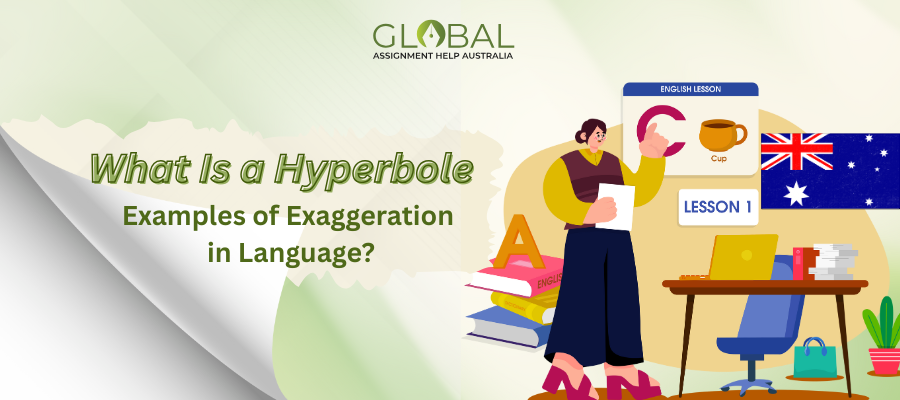 Offers
New
Order Now
Offers
New
Order Now
As a literature student, you must have read plenty of Epigraphs before but never have understood their use or identified them. But do not worry! In this blog, we will clarify everything for you. Starting with what is an Epigraph, to its types, uses, and examples. So, let us dive into the first section and understand its meaning.
An epigraph is a quote, sentence, or paragraph that appears at the start of the book. The word is derived from the Greek term epigraphein, which means "to write on." If you are wondering what the purpose of an epigraph is, well, authors use it to provide a little snippet to introduce the upcoming theme, tone, or plot.
Epigraphs are used in multiple sources such as literature, poetry, scripture, historical documents, and pop culture. The epigraph meaning and purpose is to provide context to the story and set a mood for the readers. So, it is like preparing the audience and giving them a taste of the upcoming tale.
To define epigraph in simple words, "It is a quote, stanza, or sentence that offers a sneak peek to the readers before the actual story begins. Due to its purpose, it is located at the beginning of the book, chapter, or story"." Now that we have understood its meaning, let us move on to the types of epigraphs.
Well, you know what is an epigraph and why it is used. But, do you know it has multiple types? Well, do not worry! In this section, you will learn about all kinds of epigraph and their significance. So, dive below and read the pointers one by one.
As the name suggests, epigraphs come from literary works. These can be anything like books, poems, or plays. Authors' main purpose in using them is to credit their favorite writers. They also use them to create a connection between their work and classic literature.
Well, the biblical epigraphs come from religious texts. It can be drawn from the Bible or other books. It is used to add depth or resonance to a story and tale. It is also used to highlight the moral or spiritual themes. In novels about forgiveness or redemption, a biblical epigraph creates an impact.
Quotes taken from historical books or documents are known as historical epigraphs. It can be sourced from any text, such as speeches, old letters, archives, etc. This type of epigraph examples assists in creating a story in a specific time or era. It helps the readers imagine the plot and theme the writer wants to portray.
Any quote, line, or paragraph that is significant to the author is known as a personal epigraph. They can be dialogue delivered by family members, friends, or even the writer himself. Such elements add a touch of intimacy and increase the originality of the work. It is like the author shares a piece of his life with the readers.
As the name suggests, any quotes or dialogues said by famous personalities are the famous epigraphs. They might come from a political leader or an actor. The readers instantly recognize such lines and poems. It adds a sense of familiarity and also assists in connecting the story to the real world.
Thus, each epigraph adds flavour to a chapter or story. Simply put, an epigraph in a book adds depth and resonance and even offers a context to the story. So, whether it is a quote from a classic novel or a stanza from the Bible, these epigraphs can act as a powerful tool for writers. They can quickly build engagement and captivate their readers. Moving, further
let us learn the uses of epigraphs from our assignment help experts.
Need Customized Essay HelpWhat is an epigraph? It is like a signpost at the beginning of a book that gives readers a clue about the tale. In this blog section, we will learn how to use epigraphs and create a long-lasting impact on your readers. So, continue reading the pointers listed by our experts and start your epigraph journey with our assistance!
One of the main reasons writers use epigraphs is to set the tone for their writing. You can start by choosing a quote that reflects the mood or atmosphere of their story. You can also give readers a sense of what to expect. For instance, if your book is going to be mysterious, pick an intriguing quote and also learn how to format an epigraph.
The second thing you need to do is understand why you need to use epigraphs. Well, this literary element is used to introduce the themes or ideas that the writer wants to explore in their story. Therefore, you can start by selecting a quote that relates to the main themes of their story, authors can give readers a sneak peek into the deeper meaning behind their writing.
Sometimes, writers use epigraphs to provide context for their stories. So, this means you have to choose a dialogue or paragraph that relates to the background and personality of their characters. Also, include a brief of the plot so that readers can understand the world they are entering.
Subscripts can also provide links between parts of a story, just as the Prufrock epigraph did. For example, if a book is divided into sections or chapters, the author can tie it thematically with a repeating epigraph. This creates a sense of unity and solidarity throughout the project.
Finally, using this, you can invite readers to interpret the text in a particular way. By providing more interpret-able quotes or raising thought-provoking questions, authors can encourage readers to become more engaged with their work. This can result in a beautiful and nuanced reading of the text.
We have learned multiple types and uses of epigraph from our experts. Still, before you use this in your texts and stories, you should learn how to format an epigraph and read a few examples. To help you out, we have provided a few samples in the next section. So, move ahead and learn.
Understanding epigraphs is impossible without reading their examples. So, let us look at the famous samples, starting with what is the epigraph in The Great Gatsby.
Epigraph: "Then wear the gold hat, if that will move her; / If you can bounce high, bounce for her too, / Till she cry 'Lover, gold-hatted, high-bouncing lover, / I must have you!'" - Thomas Parke D'Invilliers
Explanation: F. Scott Fitzgerald's classic novel opens with an epigraph that is attributed to a fictional character. It suggests themes of love, aspiration, and the pursuit of wealth.
Epigraph: "Let us go then, you and I, / When the evening is spread out against the sky / Like a patient etherized upon a table..." - Dante Alighieri, "The Inferno"
Explanation: T.S. Eliot's modernist poem begins with an epigraph from Dante's "The Inferno". This Prufrock epigraph translation helps the author set the tone for the existential themes and imagery that will follow.
Epigraph: "Lawyers, I suppose, were children once." - Charles Lamb
Explanation: Harper Lee's Pulitzer Prize-winning novel about racial injustice in the American South begins with a thought-provoking epigraph. It assists in challenging the readers to reconsider their assumptions and judge the nature of justice.
Well, now that we have understood the meaning of the Great Gatsby epigraph and other translations, you can start including these elements in your story. Still, if you face any issues or have any doubts, our experts are here for you. We have a team of skilled writers who hold masters in literature. If you want to know more about our professional services, move on to the next section.
Buy Our Academic Writing Services and Get Quick Help from Our Experts to Fetch HD Grades.
Our experts are highly skilled, and they have been assisting students for the last decade. So, even if you have any queries like what an epigraph is, Global assignment help Australia will provide descriptive solutions to you. Apart from this, they can assist you with anything, like writing assignments and essays on any topic. Additionally, all these services include exciting discounts and offers. So, what are you waiting for? Seek assistance now!
An example of an epigraph is a little quote or saying that you might see at the beginning of a book. For instance, in Harry Potter and the Deathly Hallows" by J.K. Rowling, the epigraph "The last enemy that shall be destroyed is death." was taken from the Bible.
In simple words, a preface is an author's introduction to a book. It provides background information. On the other hand, an epigraph is a short quote at the beginning. It assists in setting the tone, adding context, creating connections, and introducing themes for the book.
An epigraph in a poem is a short quotation or saying that appears at the beginning. It is often used for setting the tone or theme for the readers. For instance in the poem, "The Waste Land" by T.S. Eliot the epigraph is "April is the cruelest month...". This was used to introduce the cruelty and theme of nature.
Authors find epigraphs in a variety of sources, such as literature, poetry, historical documents, religious texts, and even personal anecdotes or quotes that resonate with the themes of their work. They pick the epigraph according to their story plot and its requirements.
You May Also Like to Read-
Writing a Dissertation Abstract
100+ Subject Wise Research Paper Topics
Don't Miss Out-Order Now!
Grab this exclusive offer and start your journey to savings today! Act quickly, as this special offer won't be around for long!

This blog explains what is a hyperbole, provides engaging examples, & explores how to use hyperbole.

Explore 150+ funny debate topics to spark laughter, creativity, and lively discussions in 2025

Cross-Sectional Study basics explained with steps, examples, and comparisons.
Limited Time Offer
Exclusive Library Membership + FREE Wallet Balance
1 Month Access !
5000 Student Samples
+10,000 Answers by Experts
Get $300 Now
Update your Number
